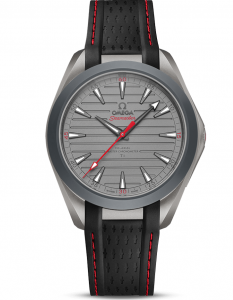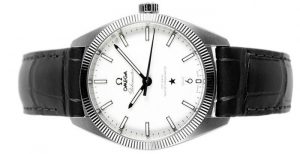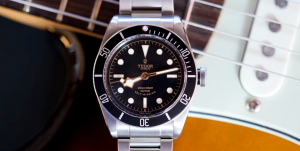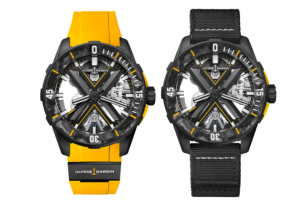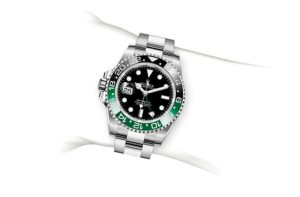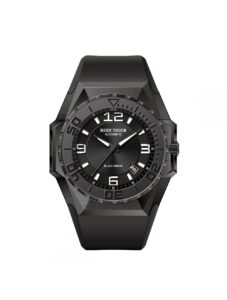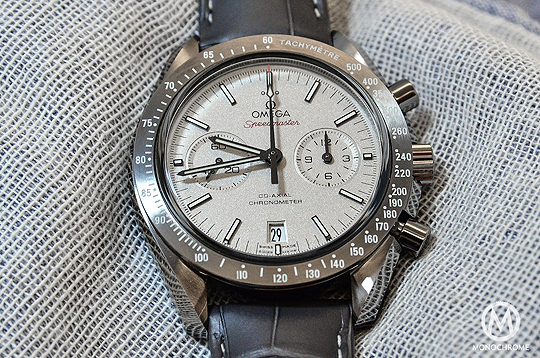
Omega went the extra mile at the 2014 Baselworld, playing the vintage card with the Seamaster 300 and the Speedmaster Mark II and also being innovative with the introduction of the first fully antimagnetic movement and the spreading of the co-axial escapement to all collections.
New materials are also in the current scope: after the introduction of a full-black ceramic Speedmaster in 2013, the Omega Dark Side of the Moon, Omega presented a gray version in 2014, again with a ceramic case, nicknamed the Lunar Dust.
Monochromatic watches have been one of the major trends in the watchmaking industry in recent years, especially with the use of black-DLC coated cases, with sometimes questionable results. Although we’re not the biggest fans of all-black watches, we have to admit that Omega’s use of the look on the Speedmaster was interesting. First of all, the color scheme works great on the Dark Side of the Moon, and the concept of a ceramic watch has been pushed to the extreme: the case, crown, pushers, caseback, buckle and even the dial are made of that same material. And the new interpretation, a “declination of grey,” is a nice alternative for those who want a brighter color.
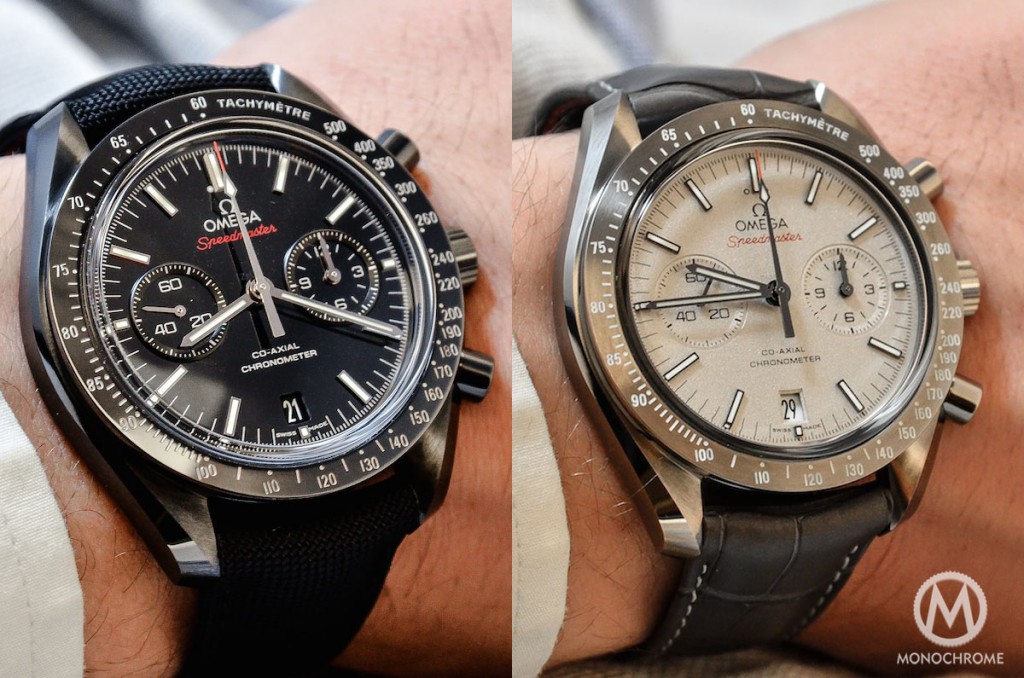
The Omega Speedmaster Lunar Dust shares its 44.25-mm case and technical specifications with the Speedmaster Dark Side of the Moon. The case is made from a solid block of white ceramic that is treated with a plasma technology. We’re not talking about a surface coating here, but a deep treatment that tints the entire ceramic: if you cut the case in half, you’ll see that the gray tone goes all the way through. What that means is no risk of fading colors or of seeing traces of white after the case has been scratched (something that will probably never happen anyway, because ceramic is nearly scratch-proof). On the photo below, you can see the different steps of manufacturing.
The Lunar Dust features Omega’s in-house Caliber 9300, a self-winding movement that is also used in the Moonwatch Chronograph and the Seamaster Planet Ocean Chronograph that we reviewed for you here. It features:
an integrated chronograph function (meaning that all the levers and gears are not in a module on top of a base movement, but are fully integrated into the movement’s construction)
a silicon balance spring that is antimagnetic
the co-axial escapement that allows very good chronometric performance and the COSC chronometer certification
two mainspring barrels that deliver more than 60 hours of power reserve
a column wheel and a vertical clutch system to engage the chronograph
The movement, visible through the caseback with boxed sapphire crystal, is finished with elegant arabesque Geneva waves. Like the IWC Portuguese Chronograph Classic we reviewed a few weeks ago, it’s a two-register chronograph that indicates the elapsed minutes and hours on a single subdial. It’s not very easy to see in these photos, but there are two hands (one for the elapsed hours, one for the elapsed minutes) in the subdial at 3 o’clock.
This movement has not yet benefited from the new antimagnetic technologies, like those used in eight new Master Co-Axial calibers, which are able to resist to magnetic fields up to 15,000 Gauss. The Omega Speedmaster Lunar Dust comes with a matching gray alligator strap. The case is larger than the classical Speedmaster Moonwatch Professional, as it measures 44.25 mm in diameter vs. 42 mm for the older, more iconic version, but has the exact same design. On the wrist however, it wears smaller than expected, probably due to the short lugs. It also feels very light, obviously owing to the use of ceramics. The gray case, dial and strap create a very monochromatic — and very original — color scheme. The Lunar Dust makes a great alternative to the all-black Dark Side of the Moon; which do you prefer?
